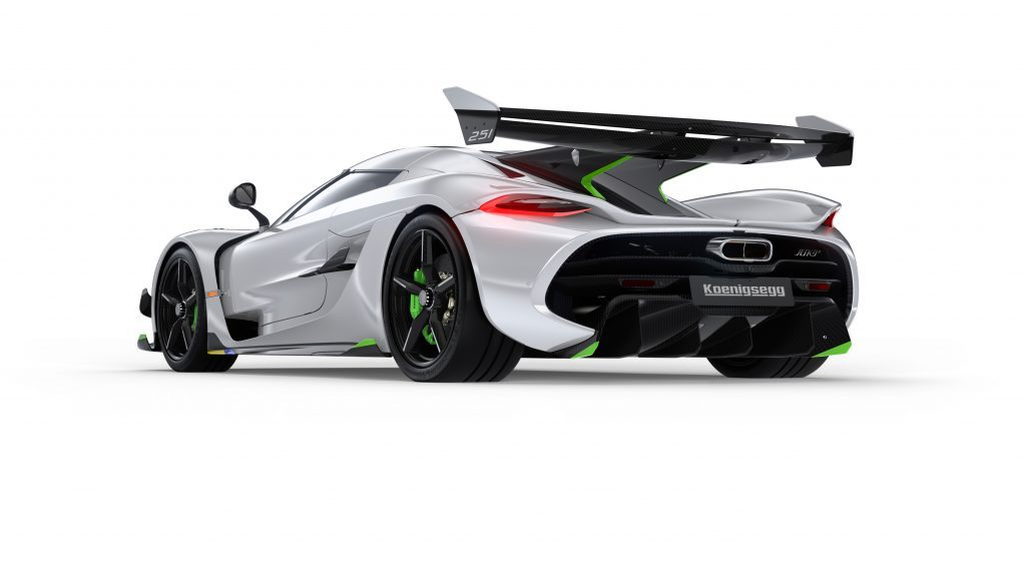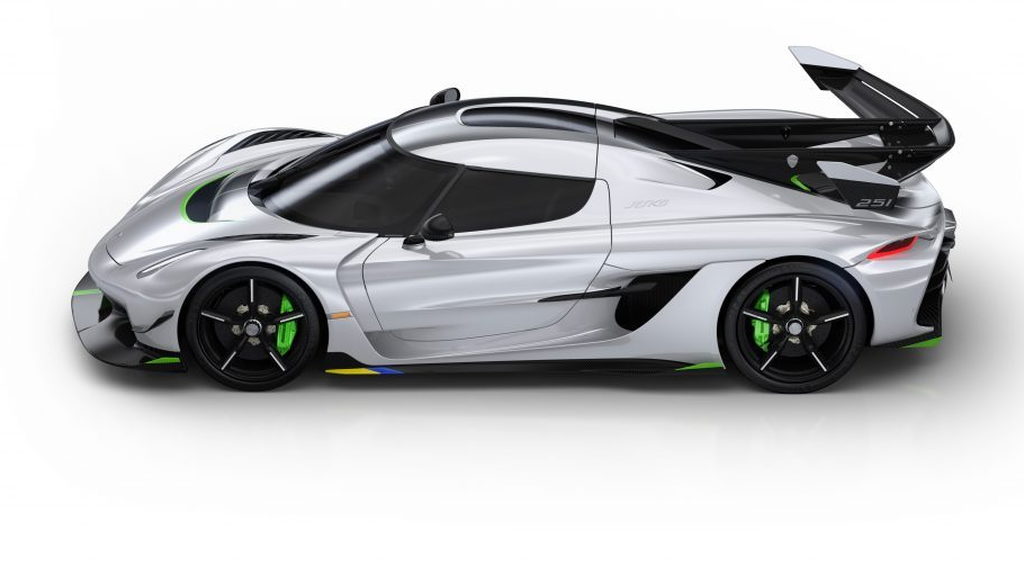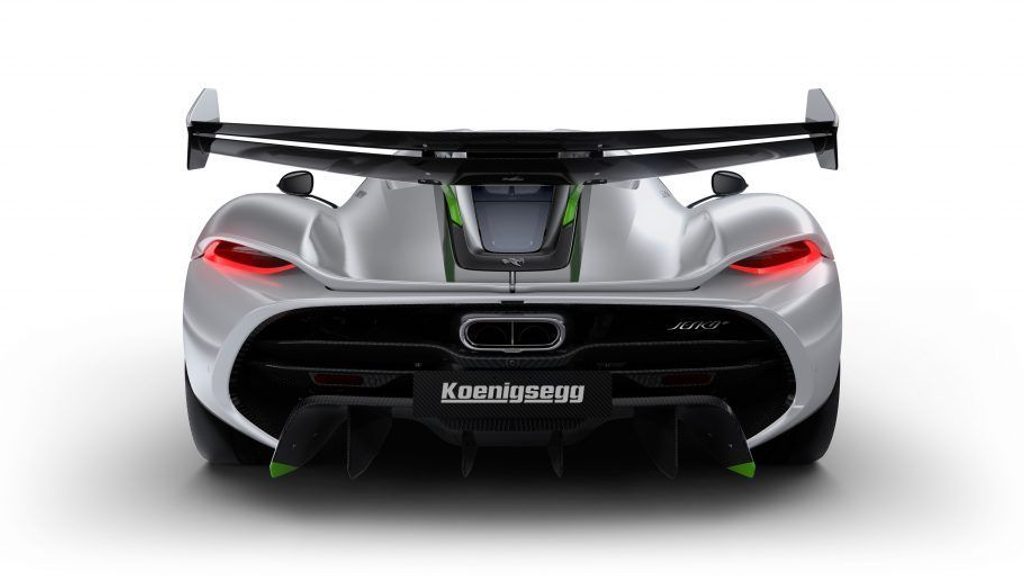When you're developing a replacement for the fastest car on the planet, a typical update isn't going to cut the mustard. Fortunately, that wasn't an issue for Koenigsegg, as nothing the Swedish performance marque does is what you'd call typical. That's clearly evident in Koenigsegg's Jesko, which was unveiled Tuesday at the 2019 Geneva International Motor Show as the replacement for the Agera line of hypercars.
Named after Jesko von Koenigsegg, the father of Koenigsegg CEO and founder Christian von Koenigsegg and a saviour of the company during its early days, the new car follows the track-focused ethos of the Agera and sees the performance bar lifted higher, despite substantial improvements being made to comfort levels.
A redesigned monocoque structure composed of carbon fiber around aluminum honeycomb improves head room and leg room, as well as visibility. The dihedral synchro-helix doors, which rotate as they extend outward, have also been redesigned so they open slightly further outward and higher to help prevent scuffs from pesky tall curbs and make getting in and out easier. There's also premium materials such as leather and Alcantara, while the two seats, which feature carbon fiber shells, are electrically adjustable, as is the steering column and pedal box.

Koenigsegg Jesko
The small, grippy steering wheel features touch-sensitive controls with haptic feedback, and located behind the wheel is a compact digital instrument cluster, part of which actually turns as the steering wheel turns. The central part of the cluster remains fixed and includes vital info such as revs, speed, and boost pressure, but the outside, which features gauges for fuel level, fuel pressure, oil pressure, and temperature, moves with the wheel so the info never gets obscured by the spokes. As a cool touch, the dash of the Jesko can also be fitted with an analog g-force meter.
Like all Koenigseggs, the roof of the Jesko can be removed. This time though, the roof features screws for extra rigidity and, unfortunately, there's no place to store it at the front like with the Agera. Call it a sacrifice to the gods of aerodynamics.

Koenigsegg Jesko
There will be two versions of the Jesko. One is the high-downforce version shown in Geneva, which is claimed to develop more than 3,000 pounds of downforce and is the ideal option for the track. Still in the works is an even faster model. It will feature a smaller splitter and wing, which will reduce downforce but also drag, resulting in a higher top speed. You'll also be able to store the roof in the front of this model. It's code-named the Jesko 300, and yes the number refers to the car's estimated top speed of 300-plus mph.
Controlling weight was another major factor when developing the Jesko; Koenigsegg boasts that the car's dry weight is only 2,910 pounds. Helping achieve this was the aforementioned carbon monocoque, but also a lightweight body made from a mix of carbon fiber and Kevlar. Carbon fiber also extends to the wheels (aluminum is standard), which measure 20 inches up front and 21 inches at the rear. These are the biggest wheels ever fitted to a Koenigsegg, but they're also the lightest, weighing 13 pounds each at the front and 16.3 pounds at the rear. Wrapped around each of the wheels are Michelin Pilot Sport Cup 2 tires as standard or Michelin Pilot Sport Cup 2 Rs as an option.
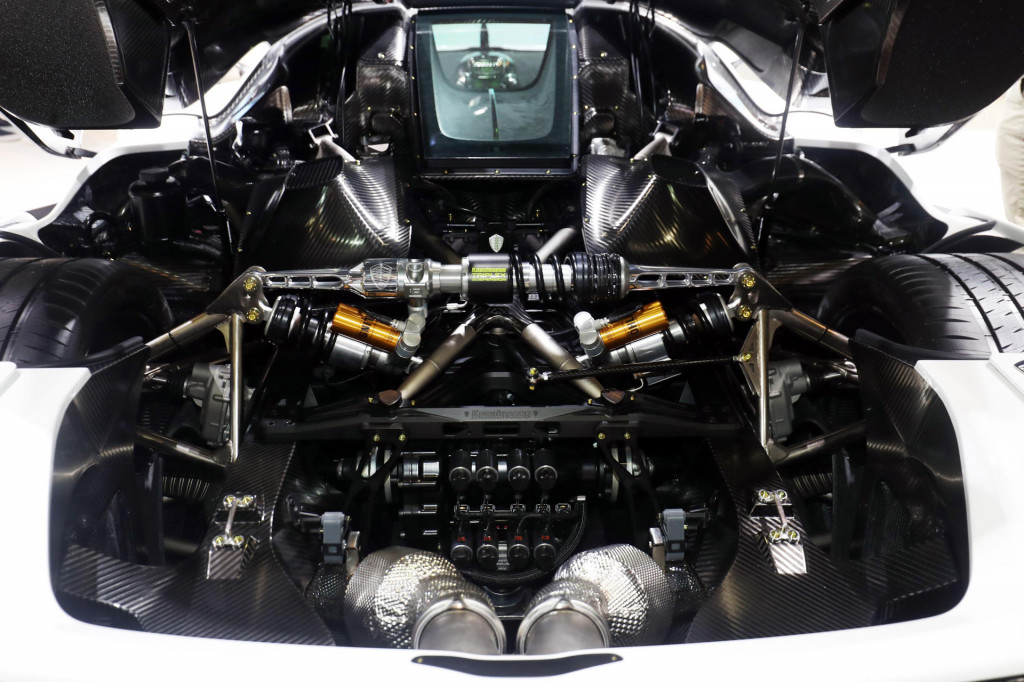
Koenigsegg Jesko
For the suspension, Koenigsegg's signature Triplex damper design is featured at both ends (previous Koenigseggs only used the design at the rear). Each wheel has its own pushrod-operated damper and a third damper joins the two. It helps to reduce bumps being transmitted between the wheels by the anti-roll bar. The result is reduced squat under heavy acceleration and increased ride comfort, and it allows for the use of a larger anti-roll bar. The rest of the suspension includes double wishbones, with carbon fiber used for the rear uppers. The car's electronically adjustable ride height lowers it almost to the ground when in Track mode. Rear-wheel-steering is also included in the Jesko, and drive is to the rear wheels only.
The engine in the Jesko is a new design, though it features the company's familiar 5.0-liter twin-turbocharged configuration. It boasts four valves per cylinder, double overhead cams, a flat-plane crankshaft, and dry sump lubrication. Peak power of 1,280 horsepower at 7,800 rpm is generated when running regular gasoline but switch to E85 fuel and output increases to 1,600 hp, or 100 more than a Bugatti Chiron. Peak torque is 1,106 pound-feet, generated at 5,100 rpm.

Koenigsegg Jesko
Koenigsegg said it went with the flat-plane crank as the design allowed greater efficiency while achieving a higher 8500-rpm rev limit. The sound of the engine should also be much more menacing, which is a trait of the flat-plane crank. Attention has been paid to saving weight, particularly for the connecting rods and pistons as the engine has a relatively long stroke and a high-revving nature. The pistons also feature a curved face with a special ceramic coating to help prevent knock.
Bigger turbos help achieve the high output, though they usually result in increased lag. To get around this Koenigsegg developed an air injection system that provides a burst of high-pressure air (290 psi) to spool the compressor wheels early. The system relies on a small electric compressor that fills a carbon-fiber 20-liter tank with pressurized air.
Each cylinder of the V-8 features pressure sensors that allow the engine management system to monitor and operate each cylinder from one stroke to another for greater efficiency. This is important for emissions regulations, with the Jesko said to be compliant with standards running out to 2026, including in California. Koenigsegg has added a third fuel injector for each cylinder, as well as a “tumble” valve on the intake side to increase turbulence as air enters the engine, which provides a faster burn rate and leads to greater efficiency. A new heating system to get the catalytic converters at optimal temperatures early also helps increase efficiency.
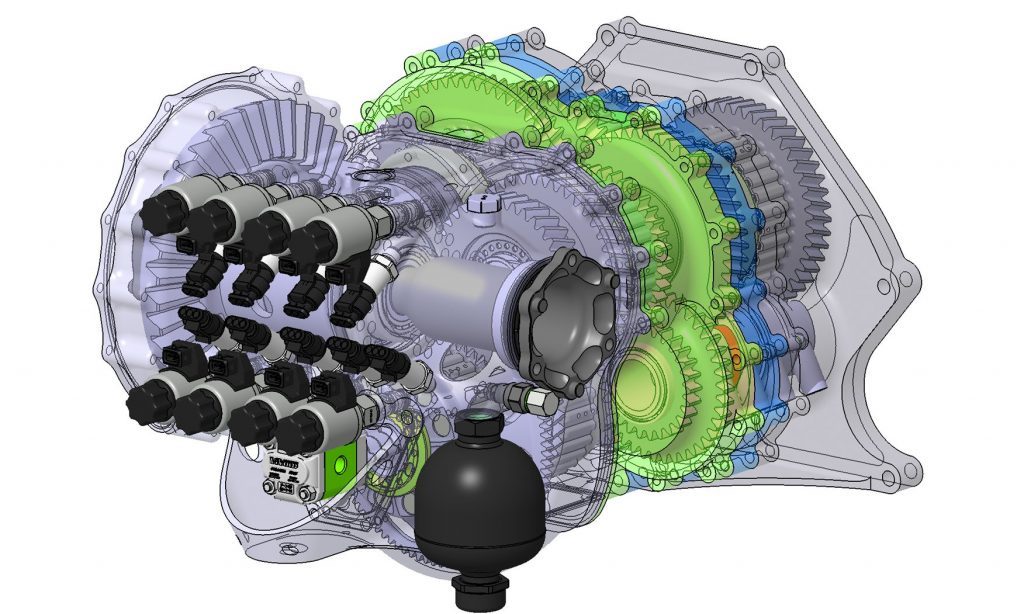
Koenigsegg Jesko
Koenigsegg refers to the Jesko's 9-speed automatic as the Light Speed Transmission, a compact design that weighs only 198 pounds, or less than many dual-clutch 'boxes with fewer gears. The increase from seven to nine forward gears is to take advantage of the Jesko's very wide power and torque ranges. Note the car's engine is delivering 737 lb-ft from 2,700 rpm all the way up to 6,170 rpm.
Another advantage Koenigsegg's transmission has over DCTs is that it can swap directly between any gear, almost instantaneously. For example, if you're cruising in seventh gear, and fourth gear is the optimal gear for max acceleration in the moment, the Jesko will let drivers shift down the three gears instantly. This is in contrast to DCTs which need to switch to an adjacent gear.

Koenigsegg Jesko
The 7-clutch design allows the transmission to keep all of the gears not currently being used ready for a change. A gear selection system labeled Ultimate Power On Demand, or UPOD for short, uses the vehicle and engine speed to determine the correct gear for maximum power and directs the transmission to engage that gear, no matter its relationship to the current gear. UPOD is activated whenever the paddle shifters or the center console-mounted gear lever is moved to a second notch. Moving them only to the first notch will execute the driver's own desired gear change.
Koenigsegg will build just 125 Jeskos, and as the car is homologated for worldwide sale, it should arrive at dealerships in the United States eventually. Pricing starts at about $3 million.
For more from the Geneva auto show, head to our dedicated hub.
